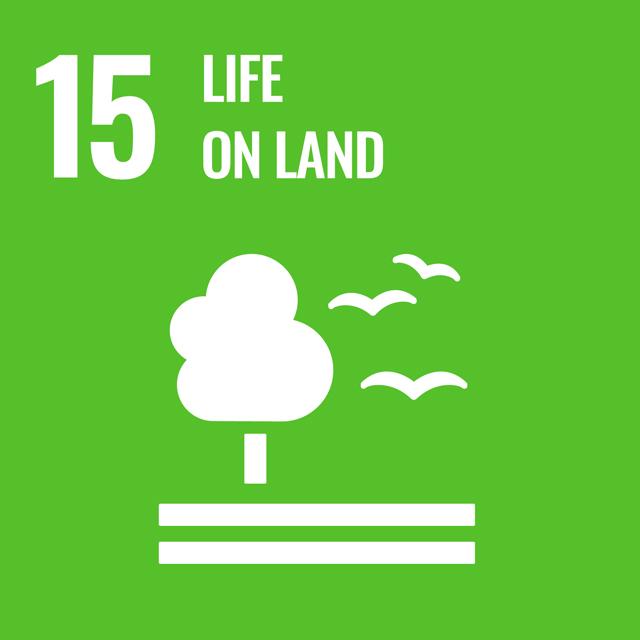
Our goals in action
Research and innovation
Canada’s largest inland field station
![[Photo of Queen's University Biological Station]](/social-impact/sites/sdgwww/files/uploaded_images/26955.20080716-GB-Biological-Station-86-Edit.jpg)
For almost 70 years, students have collaborated with international researchers at the Queen’s University Biological Station (QUBS), one of the premier scientific field stations in Canada. Teams conduct leading-edge research and participate in courses spanning ecology, evolution, conservation, geography, and environmental science. For example, researchers have access through the Fowler Herbarium to more than 140,000 plant specimens from Kingston and surrounding areas, the Canadian Arctic, and Russia dating back to the mid-1800s.
The QUBS Mandate focuses on providing opportunities for teaching and research in biology and related sciences. It also promotes using active stewardship and best management practices to conserve local terrestrial and aquatic environments, and biodiversity. QUBS offers several different programs through the Elbow Lake Environmental Education Centre and Eco-Adventure Camp that complement the Ontario Kindergarten to Grade 12 curriculum and provide opportunities for students to explore and measure local biodiversity through field-based scientific investigation.
Growing research at Queen's
Students and researchers have access to the Queen's University Phytotron to conduct plant research and other biological applications. The Phytotron is comprised of six climate-controlled greenhouse compartments and 26 growth chambers housing more than 150 tropical, subtropical, and Mediterranean plant species.
![[The exterior of the Queen’s University Phytotron facility located above the Biosciences Complex.]](/social-impact/sites/sdgwww/files/uploaded_images/2022-2023/Figure%2015.1_750x500.jpeg)
Tracking polar bears
Polar bears have seen their ecology markedly impacted by climate change. Queen’s researchers Stephen C. Lougheed, Peter Van Coeverden de Groot and Graham Whitelaw received government funding to monitor the impacts of environmental change on these majestic creatures. Their project, BearWatch, combined cutting-edge genomics with Inuit traditional knowledge to develop a non-invasive biomarker toolkit and community-based monitoring program.
![[Queen's Art of Research photo: Polar Bear Denning by Scott Arlidge]](/social-impact/sites/sdgwww/files/uploaded_images/2021-2022/Art%20of%20Research_Polar%20Bear%20Denning_750x500.jpg)
Queen's Art of Research Submission: Polar Bear Denning by Scott Arlidge, MES Student (School of Environmental Studies), Coral Harbour, Nunavut
Community impact
Consulting with Indigenous communities
Given Queen’s historical connection to Anishinaabe and Haudenosaunee territories, the university is committed to strengthening connections with local Indigenous communities. Our partnerships with Indigenous communities and organizations are an essential asset in developing our Indigenous-focused academic programs, research, and policies at Queen’s.
The Indigenous Community Research Partnerships (ICRP) is an online, open repository of educational resources authored by Queen’s Group for Ethics and Engagement in Indigenous Community Research Partnerships and designed to assist researchers who are new to research with Inuit, Métis, and First Nations communities, or who are researchers-in-training. The training resources will operationalize required regulatory policy requirements and research directives, ensure equitable inclusion of Indigenous and Western oriented knowledge in research systems, and, in the case of Indigenous-specific enquiry, to privilege or give primacy to Indigenous ways of knowing and doing.
Global reach
Urban planning beyond our borders
The School of Urban and Regional Planning collaborates with public and private organisations across Canada and the world to exchange ideas and develop ongoing research and training programs that aim to meet the challenges of a rapidly evolving urban environment.
Across the ocean, into the forest
On the grounds of Queen’s UK campus, Bader College at Herstmonceux Castle in East Sussex, England, sustainability and biodiversity are combined to help nurture and preserve the natural environment, while providing a living lab for students, staff, and members of the public. Sustainability and biodiversity initiatives have been incorporated into student programming, public events, and estate management as they implement strategies and practices to rewild the grounds.
![[Aerial photo of Bader College in East Sussex, England]](/social-impact/sites/sdgwww/files/uploaded_images/2021-2022/Bader%20College_750x500.jpg)
Administration and operations
![[Line drawing of a bag of groceries with the number >42%]](/social-impact/sites/sdgwww/files/uploaded_images/2021-2022/SDG15%20-%20groceries.png)
Queen’s loves local food! Between May 2022 and April 2023, 45% of our food served on campus came from suppliers within a 500 km radius.
Protecting birds on campus
When a Queen’s student presented research on bird collisions on campus, the Office of Sustainability installed collision reduction film on campus windows. Combining research with sustainability, the installation has brought people from across the university together to protect the local environment.
Sustainable use of campus land
Development is a major threat to wildlife habitats. Our Campus Master Plan calls for the conservation, restoration, and sustainable use of terrestrial ecosystems associated with the university and identifies stringent conditions for new developments on campus.
![[Students walk down Professors’ Walk on Queen’s University campus. ]](/social-impact/sites/sdgwww/files/uploaded_images/2022-2023/Figure%2015.2_750x500.jpeg)